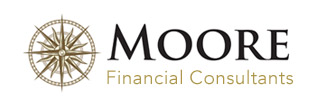Keyperson Cover
To minimise the financial impact of losing key employees a business needs Keyperson Insurance. Keyperson Insurance can be purchased by a company to protect against the financial consequences of the death and/or serious illness of one of their key employees. The employer pays the premiums and in the event of death of the insured, a cash sum is provided which will help to maintain the business and protect its future security..
Who is a Keyperson?
A keyperson is an employee whose expertise, knowledge and contacts are key to the continued financial success of the company. Keyperson Insurance assists the survival of the company on the death or diagnosis of a serious illness of a key employee by compensating that company for any anticipated financial loss on the occasion of either of these events. Business Interruption The death or diagnosis of a serious illness of a keyperson could put a company in a financially unstable condition in a number of ways:
- An interruption of business activity and a consequent reduction in profits.
- Bank loans on which the keyperson gave a personal guarantee may be called in.
- The keyperson or his/her estate may be owed any loans made by him/her to the company.
- Banks and/or suppliers may reduce or withdraw credit facilities over worries about the future profitability of the business. The loss of the individual’s expertise and business contacts.
- The need to commit resources to find a suitable replacement. This may be a prolonged process if the individual had unique experience and expertise.

Keyman cover and taxation
The purpose of Keyperson Insurance is not to improve the financial situation of the company and increase its value. It is meant to indemnify against loss of profits on the death of a key individual. Premiums paid are not necessarily admissible deductions for tax purposes. In order for the premiums to be tax deductible, all of the following conditions must be met:
- The relationship between policy owner and the life insured is that of employer and employee.
- The employee controls no more than 15% of the ordinary shares in the company. • The insurance policy has been effected for loss of profits only (e.g. not to cover repayment of loans).
- The policy is short-term, i.e. the policy cannot extend beyond the employee’s likely period of service with the employer.
If the premiums are an allowable deduction for tax purposes, the proceeds will be liable to tax. If the premiums are not allowable deductions, the proceeds are not liable to tax. Note, however, just because tax relief is not sought on premiums, it does not automatically follow that the proceeds will be tax-free.

Partnership cover
A Partnership is a form of business ownership with two or more owners who agree to pool talent and money, and share the profits or losses of that Partnership. The death of one of the partners can have serious financial consequences for those left behind in that business. Partnership Insurance will protect the financial security of the partnership by making sure that funds are available to compensate the deceased partner’s estate for his/her share of the Partnership. A Partnership Insurance policy can also cover the diagnosis of a serious illness of a partner.
A Partnership comprises two or more self-employed people operating together in a trade or profession. If no Partnership Agreement exists, the survival of the Partnership depends on the Partnership Act of 1890, which states that in the event of the death of a partner, the partnership is dissolved and any sum due to the deceased partner is to be treated as the debt of the Partnership. This debt can consist of any capital that the partner had invested in the business and the deceased partner’s share of undrawn profits. In addition, the successor(s) may be entitled to a payment for a share of the goodwill* of the business if it has been recognised by the partners as an asset of the Partnership. * Goodwill may be defined as the anticipated value of the partnership’s name, tradition and contacts.
The approach to arranging the life insurance cover and to quantifying the amount of insurance required will depend on what payments need to be made by the surviving partners. The liability in respect of the capital injection and any undrawn profits is relatively straightforward to calculate. The most important factor to be decided is whether or not there will be payment in respect of goodwill. Goodwill can be very difficult to calculate; it is often taken as a multiple of the fee income of the firm. Professional advice from the accountant to the partnership should be obtained for direction in calculating goodwill.

There are two methods of setting up Partnership Insurance:
Own Life in Trust
The steps in setting up an Own Life in Trust arrangement are as follows:
1. Each partner effects a life insurance policy on his/her own life, for a sum insured equivalent to the estimated full market value of his/her partnership share. The premiums are generally paid by the partners themselves or by the partnership from that partner’s share of the profits. The premiums are not tax deductible.
2. Each policy is arranged under trust (using a Partnership Insurance Trust Form) so that on death, the proceeds are payable directly to the trustees for the benefit of the surviving partners.
3. A legal agreement is put in place between the partners using a Partnership (Double Option) Agreement.
This gives the surviving partners an option to buy the deceased partner’s share. It also gives the successor(s) of the deceased partner the option to sell the share of the partnership to the surviving partners. If either party exercises his/her option, the Agreement obligates the surviving partners to buy the deceased’s share of the partnership at a fair open market value and obligates the successor(s) to sell the share of the partnership back to the surviving partners. If both parties mutually agree not to exercise their options, this allows the successor(s) to retain their share of the partnership and come into the business.
There is an alternative legal agreement available known as a Buy and Sell Agreement, whereby the sale transaction must always be carried out. In either case, the agreement should be referred to a solicitor for examination.
Life of Another
The steps in setting up “Life of Another” arrangement are as follows:
Under a Life of Another arrangement, each partner takes out a policy on each of the other partner’s lives. This is generally only feasible where there are a small number of partners and the partnership composition is unlikely to change.
On the death of one of the partners, each of the others receives the proceeds of his/her policy, which can be used to buy out the deceased partner’s share in the partnership.
A legal agreement is put in place between the partners using a Double Option or Buy and Sell Agreement, as previously set out.
As each partner receives the proceeds of the policy for which he/she paid the premiums, there is no liability to Capital Acquisitions Tax.
IN ALL THESE SITUATIONS YOUR SOLICITOR SHOULD BE CONSULTED PRIOR TO TAKING OUT ANY OF THESE POLICIES
You can download our guides to insurance here
Insurance Guides
Our Insurance Agencies

MOORE FINANCIAL
CONSULTANTS
NEWSLETTER
Sign up to our newsletter to keep up to date with all the latest relevant financial information.



